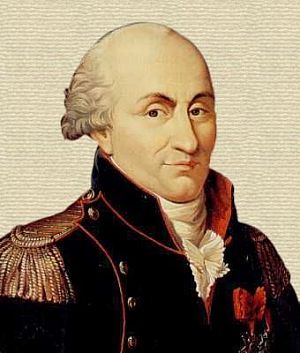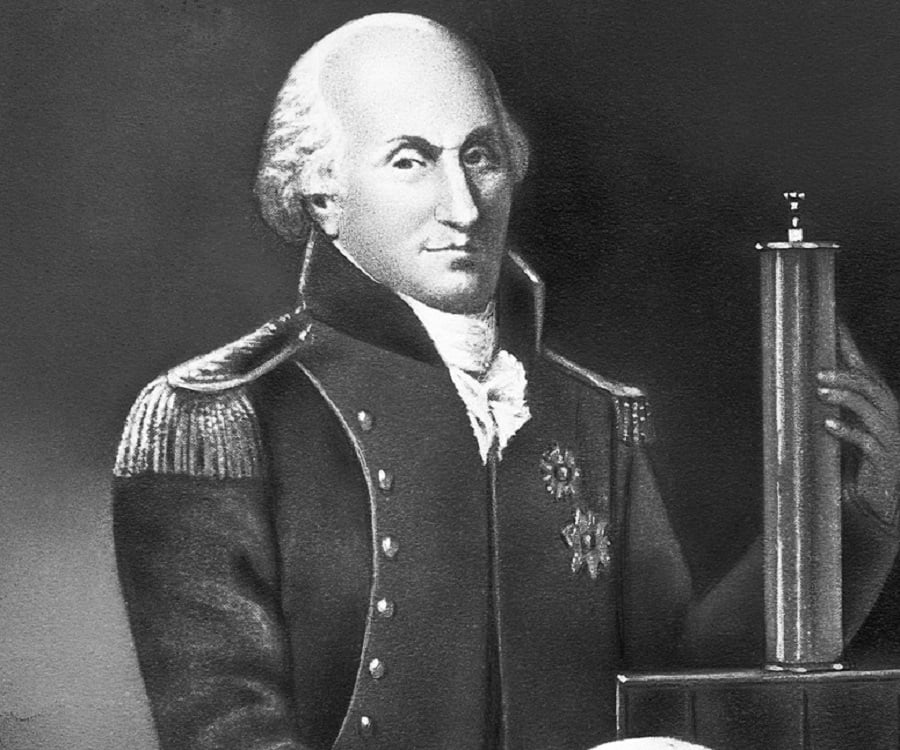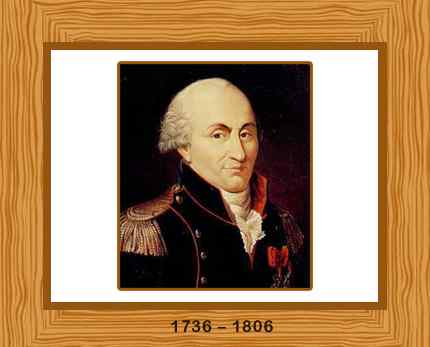Charles Augustin de Coulomb
Charles Augustin de Coulomb ( born June 14, 1736, in Angoulême, † August 23, 1806 in Paris) was a French physicist and founded the electrostatics and magnetostatics.
Biography
Coulomb's father Henry came from a distinguished family of lawyers and administrators in the Languedoc region, his mother was Catherine Bajet. He grew up in Angoulême and went after the family had moved to Paris, on the prestigious College Mazarin in Paris. After his father had lost his fortune in speculation, the parents separated. Coulomb initially remained in the mother, but since it came to dispute about that he wanted to pursue a career in math and science, he followed his father to Montpellier. In 1758 however, he was back in Paris to prepare for the entrance exams at the state school for engineering officers Ecole de genie militaire de Mézières. Beginning in 1760 he began to study there and made his final end in 1761 and began his career in the civil service as a lieutenant of the Corps du Génie, where Coulomb tasks perceived as a civil engineer, for example, repair of fortresses. First, he was to be stationed in Brest and fixed more in Martinique in the Caribbean, which had been conquered by the British in 1762 temporarily and after the return of France from 1764. Until 1772 Coulomb directed the construction of the new Fort Bourbon. Fruit of this work was a treatise on statics, which he published in 1773 after his return to France in the treatises of the French Academy of Sciences ( Académie des sciences ), which gained him the attention of scientists as his former teacher Charles Bossut. While he was stationed in Cherbourg, Coulomb wrote a treatise on the compass, the 1777 won him a prize from the Paris Academy. The paper was also of significance because it the torsion balance ( and in general the torsion of thin threads ) treated, which should be the basis of his experiments to measure even weak forces later.
In 1779 he was sent to Rochefort to help the Marquis de Montalembert, who followed new, divergent from the classic line of Vauban ideas in the construction of a fortress built entirely of wood forts. On the shipyards in Rochefort, he stated experiments, the theory of simple machines led to his treatise, in which he developed his theory of frictional forces. She brought him a 1781 the grand prize of the Paris Academy of Sciences and led to his admission to the Academy, which Coulomb made independently. He moved to Paris and devoted himself to physical experiments that led to his famous treatises on electricity and magnetism in the period 1785-1791, but also to many other treatises. As an engineer, he was only occasionally worked in an advisory capacity, as 1783/84, against his will as an expert on harbor and canal projects in Brittany, but which led to disputes, he spent a result of which even a week in jail. Coulomb was very active in the meetings of the Academy and published much, where he worked closely with well-known scientists and engineers such as Pierre Simon de Laplace, Jean -Charles de Borda, Charles Bossut and Gaspard de Prony. The government moved it aside also to other tasks, looking like the assessment of hospitals, resulting in a study trip to London in 1787, or the water supply of Paris and the function of the water features in the Royal Gardens (1784 ).
After the outbreak of the French Revolution in 1789 Coulomb lost many of its offices or put them down (1791, he left the corps de Genie ). After 1793, the Academy of Sciences was disbanded, he retired to the country to Blois, where he owned a house and further dedicated experiments. It was not until 1795 he returned with the founding of the Institut de France, which replaced the Academy and his election as a member of the Institute back to Paris. Napoleon brought him back into the civil service back as overseer of the educational system of the country from 1802 to 1806, where he promoted the creation of new grammar schools ( Lycée ) throughout France.
Coulomb was married since 1802 to Louise Françoise LeProust Desormeaux, with whom he had previously in 1790 and 1797 two sons.
Work
His scientific achievements are numerous:
- Laws of static friction
- Internal friction of liquids
- Historically oldest formulation of the shear Act in the Soil Mechanics and solution of Erddruckproblems, which also treats the Coulomb theory arched stone in his essay of 1776.
- Its outstanding performance is the experimental demonstration of the electrostatic force-distance law ( Coulomb's law ): With a torsion balance (at the time electric balance called ) he described 1784/85 experiments that illustrated the regularity with which the relation between the electric force between two charges and the distance between these charges describes. The Coulomb force is one of the four fundamental forces of physics.
Coulomb honor is, the physical unit of electric charge 1 C ( coulomb ). The Coulomb blockade is named after him.
Coulomb 's name immortalized on the Eiffel Tower, see: The 72 names on the Eiffel Tower.





.jpg)




